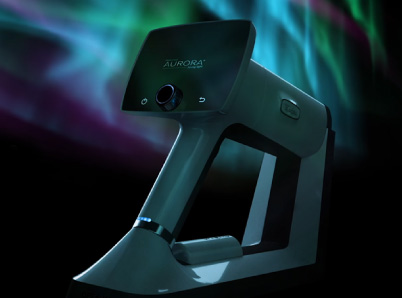When they have the right instrument, primary care physicians (PCPs) can play a vital role in helping millions of patients of all ages get timely treatment for conditions that threaten sight. For generations of primary care providers, that instrument was the direct ophthalmoscope.
The American Academy of Ophthalmology deems several conditions to be appropriately recognized in primary care through ophthalmoscopy.
- Newborns should return a red reflex.
- Children and teens with sports injuries may present with retina issues that can be detected with a hand-held direct ophthalmoscope.
- Age-related macular degeneration, retinoschisis, retinal detachment, glaucoma, and diabetic retinopathy become increasingly common as adults age. All of these conditions can be detected with direct ophthalmoscopy in the hands of a seasoned practitioner.
It’s not hard to understand how direct ophthalmoscopy has remained an important tool even in the twenty-first century. Generations of medical students have been trained to use the instrument, and direct ophthalmoscopy is affordable, portable, scalable, and accessible. It offers high magnification and a true image (not flipped). It accommodates different filters and allows for examining both the anterior eye and the fundus. But direct ophthalmoscopy does have serious diagnostic limitations:
- The direct ophthalmoscope has a limited field of view. Examining the eye with a wide field of vision requires dilation. With a direct ophthalmoscope, it is usually necessary to make at least 170 views of the retina to detect a lesion two disc diameters wide.
- With the direct ophthalmoscope, the examiner has depth perception only in parallax. This can make it difficult to distinguish unusual anatomical features from pathology.
- Using a direct ophthalmoscope is challenging if the patient has physical issues with mobility (e.g., tremor, uncooperative, neck issues, etc.). More patient contact is required because of the limited field of view.
- There is no automatic recordkeeping with a direct ophthalmoscope. The primary care provider can only sketch what is seen.
- There is a limited role for support staff in scaling the use of the direct ophthalmoscope. The instrument is used almost exclusively by the doctor.
- Cheek-to-cheek contact is essential for imaging the eye. Social distancing becomes impossible.
The sensitivity of direct ophthalmoscopy is also inferior to the sensitivity of a mobile fundus camera. The Liverpool Diabetic Eye Study found the sensitivity of the detection of eye disease with an ophthalmoscope to be only 65%, compared to 89% with a mobile fundus camera.
The Teaching Ophthalmoscopy to Medical Students study quantified medical student preference for a fundus camera over a direct ophthalmoscope.
- About 77% preferred photographs to ophthalmoscopy.
- The accuracy of answers was better when interpreting fundus photographs than when performing ophthalmoscopy on simulators (p<0.001).
- Examination of the ocular fundus was easier and less frustrating when using photographs than ophthalmoscopy.
Fortunately, there is a better way to meet patient needs for the detection of eye abnormalities. The preferred alternative is a modern mobile fundus camera.
Examination with a modern mobile fundus camera is non-mydriatic, so eyes do not have to be dilated for clear imaging.
The modern mobile fundus camera replaces a 5- to 8-degree field of vision with a 50-degree field of vision. The primary care provider can detect pathology in just a few quick fields of view instead of working through a grid of 170 to 220 locations in the eye.
The modern mobile fundus camera is equipped with AI for pattern detection to locate abnormalities. It can send a high-resolution image in real time to colleagues and specialists.
Optomed Aurora incorporates other features:
- Strong warranty
- HIPAA compliance
- EHR integration
- Ease of operation, permitting use by support staff
- Scalability across multiple locations and even across offices and community partners (for example, house calls, community vision drives, and mobile screenings)
- Integration capabilities of AI pattern recognition for symptom detection
- Easy integration into the referral system
Optomed Aurora is fast, accurate, and affordable, providing a superior alternative to the ophthalmoscope. It is the leading vision technology company in the world, a trusted provider of high-value vision screening technology.
Here at Optomed, our mission is to help save the vision of millions of people. By integrating our software and artificial intelligence solutions with our camera, we enable eye screening for everyone, wherever they are. To see how we can equip you to save the sight of more patients, schedule a free consultation today!
